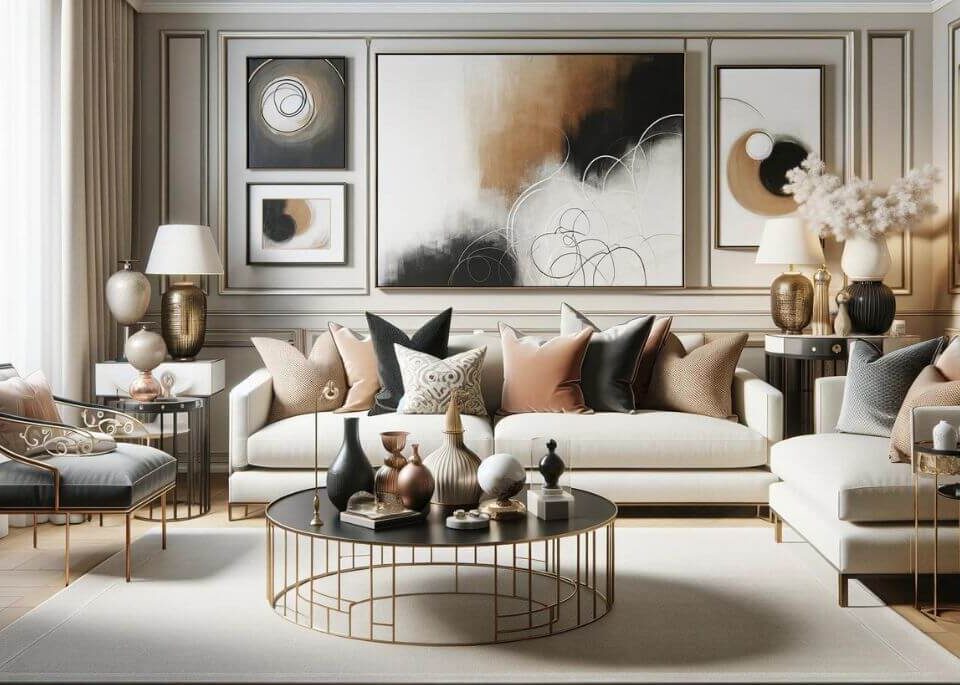
The Fundamentals of Interior Design: Mastering the Art of Space, Color and Texture
August 8, 2023
Choosing the Right Furniture: Style, Material and Finish
August 10, 2023How to Choose the Perfect Textiles and Fabrics for Your Home

Interior design isn’t just about choosing the right furniture, colors, or decorative pieces. One critical aspect often overlooked is the role of textiles and fabrics. These elements add texture, color, and comfort, significantly impacting the overall look and feel of your space. In this guide, we’ll delve into the world of textiles and fabrics in interior design, providing you with the knowledge to make the perfect selection for your home.
Table of Contents
The Role of Textiles and Fabrics in Interior Design
Textiles and fabrics are instrumental in interior design. They can enhance the aesthetic appeal, elevate the comfort level, and bring a sense of cohesion in a room. They serve both functional and decorative purposes, contributing to the overall ambience.
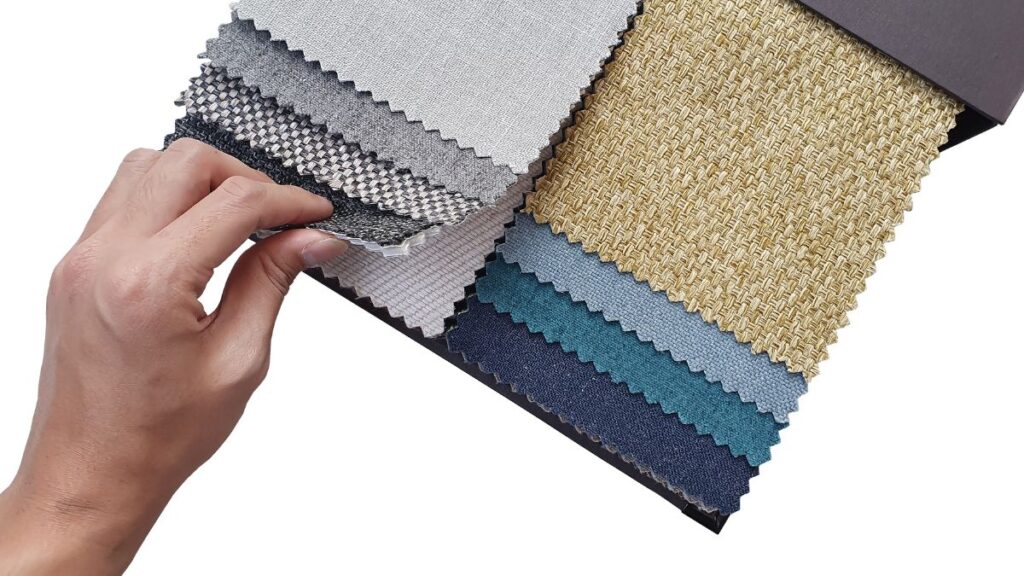
Different Types of Textiles and Fabrics
There are countless types of textiles and fabrics, each with its own unique characteristics, feel and aesthetics. Let’s delve into some common ones.
Cotton
Cotton is a versatile and durable fabric. It’s breathable, hypoallergenic, and has high absorption capacity, making it perfect for any climate.
Silk
Silk is a luxurious fabric known for its smooth texture and shimmering appearance. It’s perfect for creating a high end, opulent look in any room.
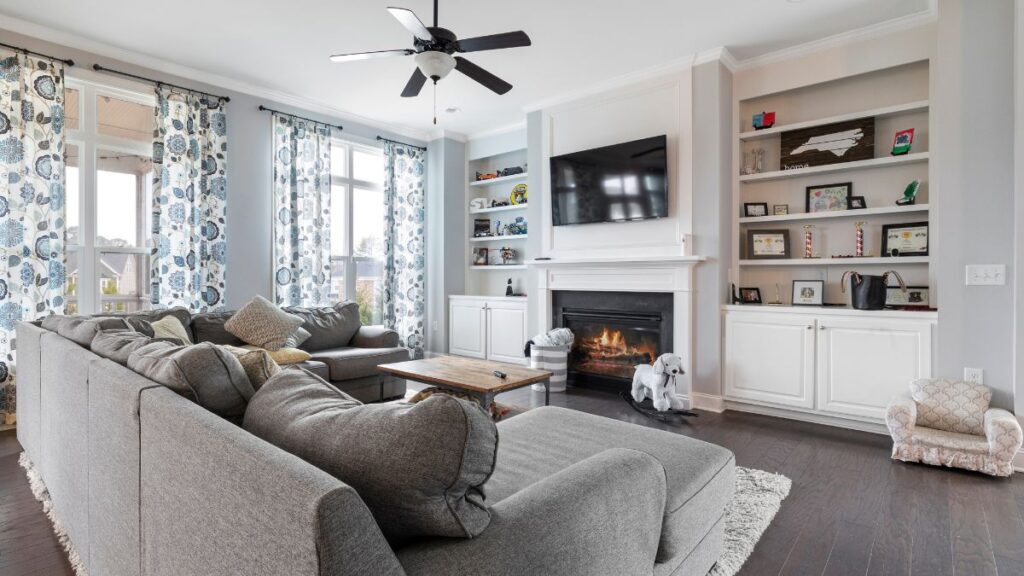
Wool
Wool is a warm, durable and resilient fabric. Its natural fire resistance and insulation properties make it an excellent choice for rugs and throws.
Synthetics
Synthetic fabrics like polyester and nylon are known for their durability, stain resistance, and affordability. They are ideal for high traffic areas in the home.
Choosing the Right Fabric for Your Furniture
Choosing the right fabric for your furniture depends on the function of the space, your lifestyle and personal taste. For high traffic areas, opt for durable and stain-resistant fabrics like synthetics or treated cotton. For a more luxurious or formal setting, silk or velvet could be an ideal choice.
Selecting Textiles for Your Bedding
When it comes to bedding, comfort is paramount. Cotton is a popular choice due to its softness, breathability, and durability. Flannel, a type of brushed cotton, provides extra warmth for colder seasons, while silk can add a touch of luxury.
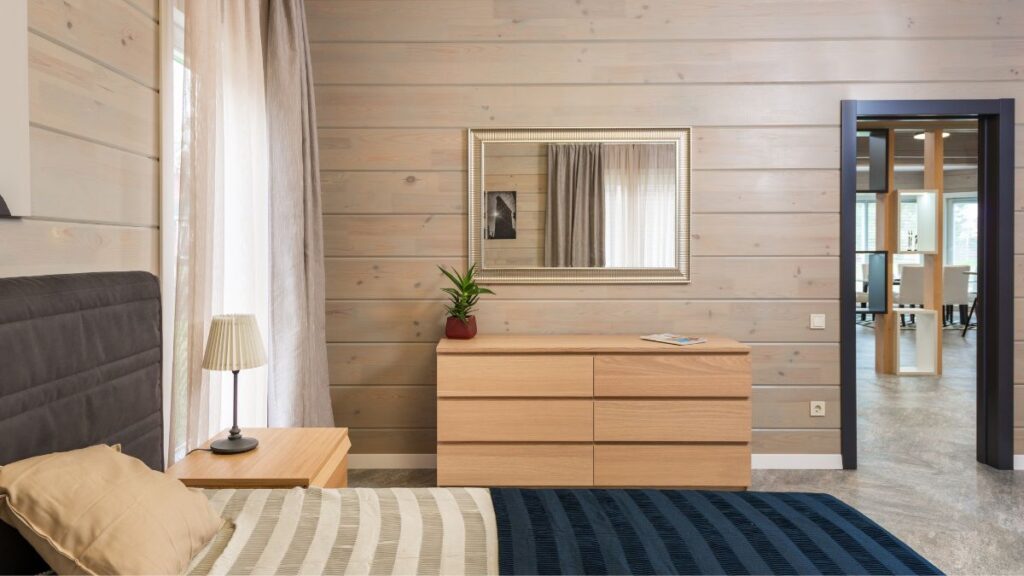
The Ideal Fabric for Window Treatments
The fabric you choose for your window treatments can significantly impact the light, privacy, and overall aesthetic of your room. Light, sheer fabrics like linen or silk allow more light and provide a soft, airy feel. In contrast, heavier fabrics like velvet or brocade offer more privacy and can add a dramatic touch to your space.
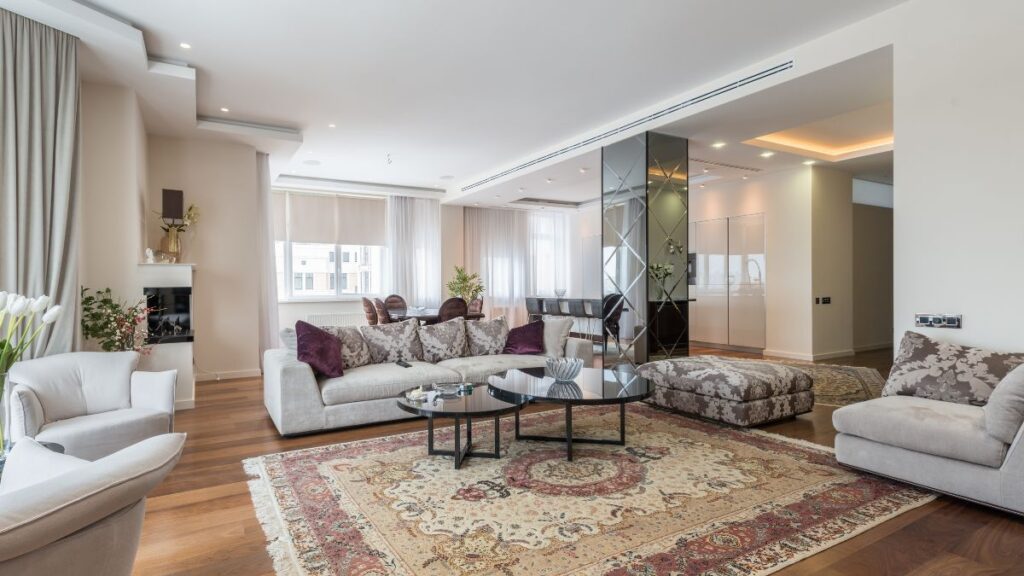
Picking the Perfect Rug Material
Rugs can be a significant statement piece in a room. Wool rugs are durable, soft, and warm, making them suitable for living rooms and bedrooms. Synthetic rugs are easy to clean and can withstand heavy foot traffic, ideal for hallways or entryways.
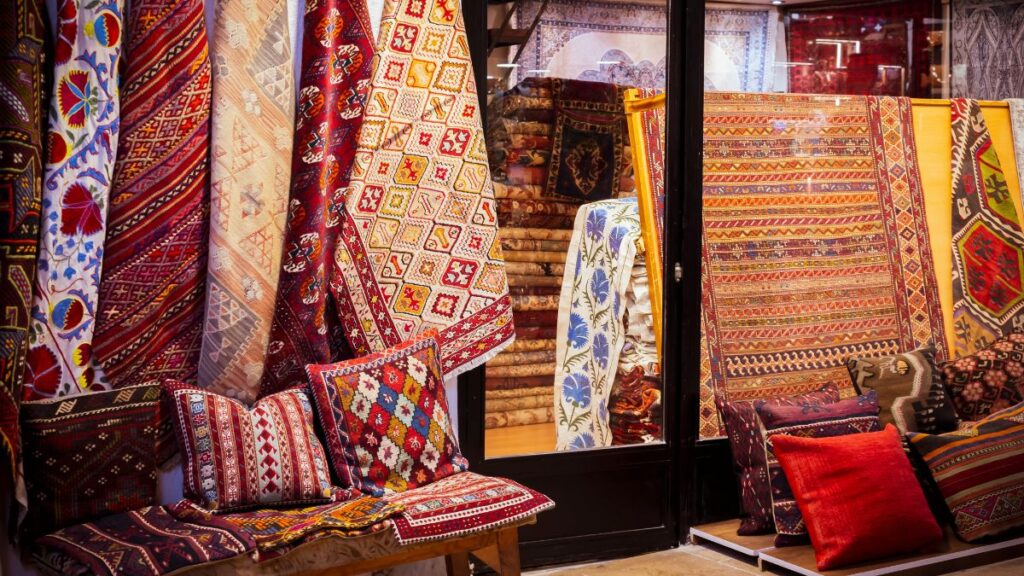
Upholstery Fabric Selection
When it comes to choosing fabric for your upholstery, consider its durability, style, color, and how easy it is to clean. Material like leather is durable, easy to clean, and can give a sophisticated look to your space. On the other hand, fabrics like velvet, though a bit harder to maintain, provide a plush, rich feel.
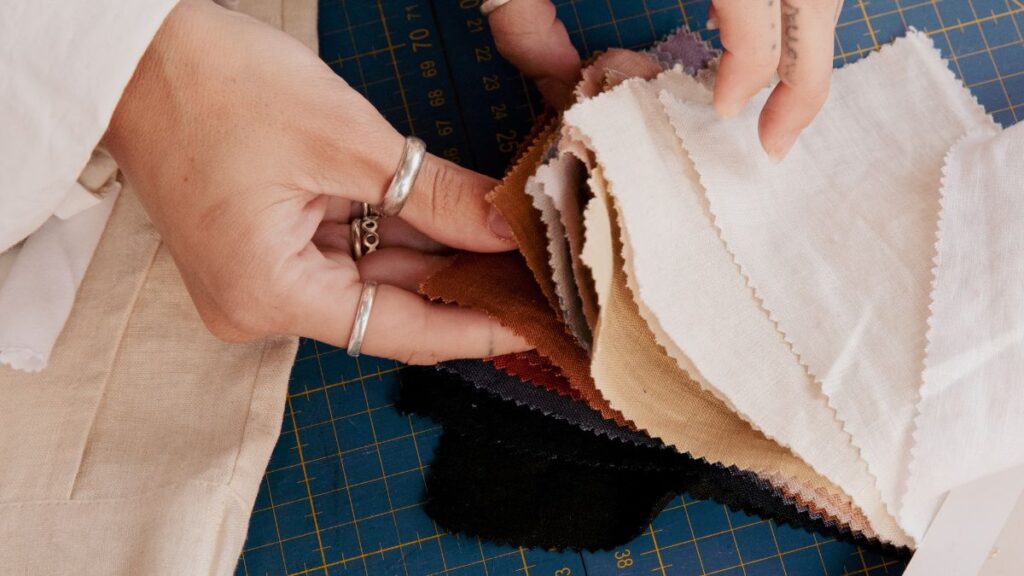
Mixing and Matching Fabrics
Don’t be afraid to mix and match different fabrics in your space. This can add depth and interest to your room. The key is to balance the textures, colors, and patterns to create a harmonious look.
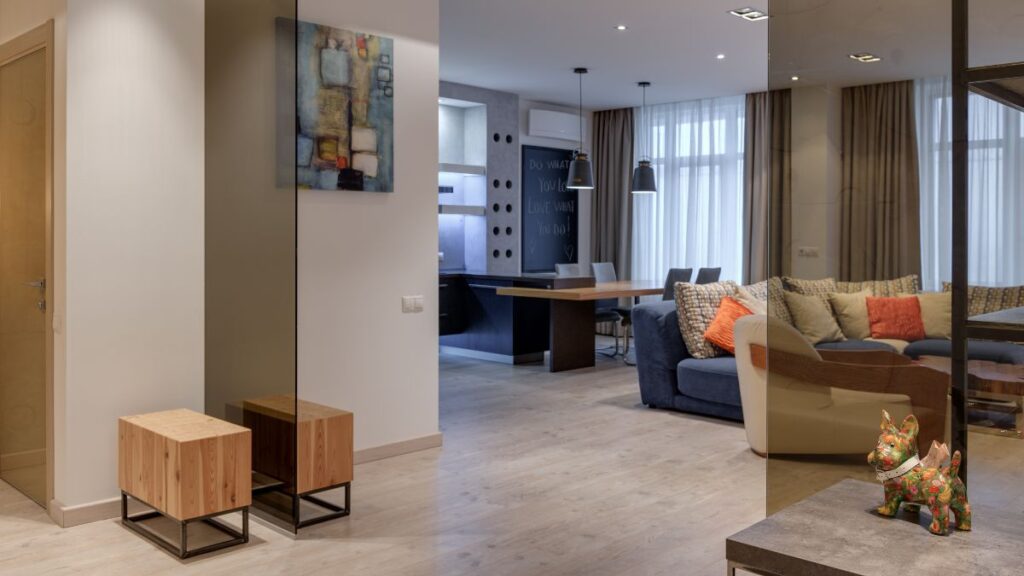
Caring for Your Textiles and Fabrics
Proper care and maintenance can extend the life of your textiles and fabrics. Each fabric type has specific cleaning instructions that should be followed to maintain its look and feel.
Key Takeaways: Choosing the Perfect Textiles and Fabrics
- The Role of Textiles: Textiles and fabrics are vital to the overall look and feel of a space. They enhance aesthetics, offer comfort, and create a cohesive ambiance.
- Types of Textiles: Different materials like cotton, silk, wool, and synthetics have unique characteristics. Selecting the right fabric depends on your lifestyle and design needs.
- Functional Application: For high-traffic areas, durable and stain-resistant fabrics are ideal. For a luxurious look, consider fabrics like silk and velvet. Bedding and window treatments require fabrics with specific qualities that balance comfort and privacy.
- Mixing and Matching: Combining different fabrics can bring depth and contrast to your space. Harmonize colors, textures, and patterns to maintain a balanced look.
- Care and Maintenance: Regular dusting, spot cleaning, and following specific care instructions can prolong the lifespan of your fabrics, ensuring they continue to look and feel good.
Conclusion
Choosing the right textiles and fabrics is essential in creating a home that reflects your style and meets your comfort needs. By understanding the characteristics and uses of different fabrics, you can make informed choices that will enhance your space’s beauty, comfort and functionality.
FAQs
1. Why is cotton popular for bedding?
Cotton’s breathability, softness, and durability make it a popular choice for bedding. It’s also hypoallergenic, providing comfort across different climates.
2. Is it OK to mix different types of fabrics in one room?
Yes, mixing different fabrics can add depth and interest to a room. The key is to balance the textures, colors, and patterns to create a harmonious look.
3. What is the most durable fabric for furniture?
Leather and synthetic fabrics are generally considered the most durable for furniture, especially for pieces that will see heavy use.
4. Can I use the same fabric for my curtains and upholstery?
While you can use the same fabric, it’s usually recommended to use complementary fabrics to add depth and interest to the space.
5. How do I take care of my textiles and fabrics?
Each type of fabric will have specific care instructions. Generally, regular dusting, spot-cleaning stains, and periodic deep cleaning can help maintain your fabrics.
6. What type of fabric is best for a child’s room?
Synthetic fabrics like polyester are a good choice for a child’s room due to their durability and ease of cleaning.
7. Is it okay to mix different types of fabrics in one room?
Yes, combining different fabrics can enhance your room’s depth and visual interest. However, it’s crucial to balance colors, textures, and patterns to create a unified and harmonious look.
8. What is the most durable fabric for furniture?
Leather and synthetic fabrics are highly durable for furniture. They can withstand daily wear and are easier to maintain, making them suitable for frequently used pieces.
9. Can I use the same fabric for curtains and upholstery?
While possible, it’s often better to choose complementary fabrics to add depth. Different textiles for upholstery and curtains can provide visual contrast while maintaining cohesion.
10. How do I take care of my textiles and fabrics?
Follow each fabric’s specific care instructions. Regular dusting, spot-cleaning, and periodic deep cleaning can maintain the quality and longevity of your textiles.
11. What type of fabric is best for a child’s room?
Synthetic fabrics like polyester are an excellent choice for children’s rooms because they are durable and resistant to stains, making them easier to clean.
12. What makes wool rugs a good choice for living rooms?
Wool is warm, durable, and naturally fire-resistant. These properties make wool rugs ideal for high-traffic areas like living rooms due to their resilience and longevity.
13. Which fabric should I use for window treatments?
Choose fabrics based on the desired lighting and privacy levels. Sheer fabrics like linen and silk let in more light, while heavier materials like velvet block light and provide greater privacy.
14. Are synthetic fabrics a good option for rugs?
Yes, synthetic fabrics are durable, stain-resistant, and cost-effective. They’re well-suited for high-traffic areas like hallways and entryways where regular cleaning is needed.
15. How do I choose fabrics that match my lifestyle?
Assess the function and use of the space. High-traffic rooms need durable fabrics, while formal settings benefit from luxurious options. Tailor fabric choices to accommodate pets, children, or specific activities.
Discover the world of window treatments and their impact on ambiance, privacy, and aesthetics in our Window Treatments: A Comprehensive Guide, providing a wealth of options and insights to help you make the best choices for your windows.

